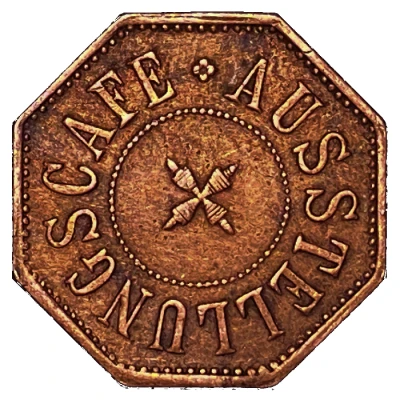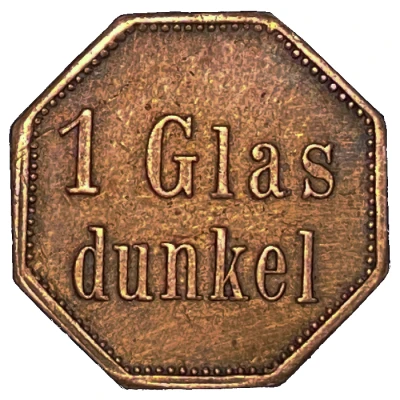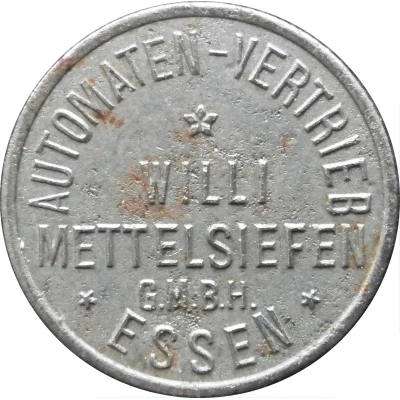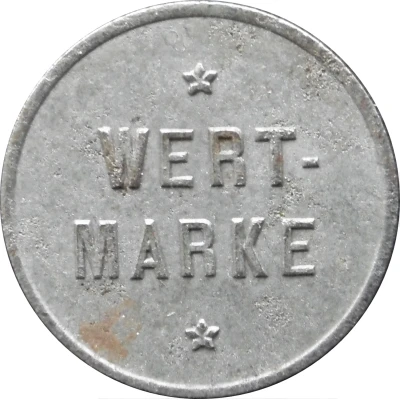


Tramway Token (Erfurt - Strassenbahn) ND
| Cardboard | 0.75 g | 24.2 mm |
| Location | Germany (1871-1948) |
|---|---|
| Type | Transportation tokens › Public transportation tokens |
| Composition | Cardboard |
| Weight | 0.75 g |
| Diameter | 24.2 mm |
| Thickness | 1.6 mm |
| Shape | Round |
| Orientation | Medal alignment ↑↑ |
| Demonetized | Yes |
| Updated | 2024-11-14 |
| Numista | N#138089 |
|---|---|
| Rarity index | 97% |
Reverse
Lettering:
Widerruf
gut
für eine
Fahrt
vorbehalten
Translation:
revocation
good
for one
ride
reserved
Edge
Plain
Comment
By 1873, Erfurt was a fortress city, whose border was the city's walled fortifications from the 15th century. When the walls were torn down in the 1800s the city could expand and grow outward, leading to greater travel distances and the question of a public transport system arose. The first plans to build a tram system were developed from 1880 onwards, and were mainly driven by the then Mayor of Erfurt, Richard Wroclaw. On 13 May 1883, the first horsetram line was put into operation, run by the Erfurter Straßenbahn AG, and offering 5–20 minute headways. Soon, three tramlines were in operation, with the designations Red Line, Green Line, and Yellow Line.By the early 1890s the population of Erfurt had grown from 55,000 to 76,000 residents, and horse-drawn trams could no longer meet the demands of the local populace. Plans to electrify the Erfurt tram system were undertaken in 1893. The first test drives on the electrified system were carried out on 28 May 1894, and the tram system was converted to electric current by 20 August 1894.
At this time the tram network was still mostly single track with some passing loops, which proved to be a huge obstacle to the further expansion of the tram system. So, starting in 1912, the gradual expansion of all Erfurt's tram routes to double track operation was undertaken. By 1913, tram routes to various suburbs (e.g. Hochheim and Melchendorf) did not seem to be financially viable, so a plan for a supplementary bus network was developed. However, its realization and the further expansion of the tram network were prevented by the outbreak of the First World War in 1914. During World War I, the tram network was used for the transport of troops, cargo and wounded (thus hospital cars were set up) to and from the Erfurt Hauptbahnhof, the hospital on the Nordhäuser Road, and the barracks on the southern edge of the city. A ride then cost just 15 Pfennig, a fare that remained valid until 1989.
In 1920, the municipality of Erfurt took over the tram network. In the 1918–1922 period, some tram lines were cut, especially for the purposes of the demilitarization of those lines that had led to the barracks, but also those lines which had become unprofitable. Only in 1924 could new investments in the network be made, which led to a further doubling of the network by 1930 and the procurement of new tram vehicles. Also, in 1925, the first bus routes were opened for service. In 1930, tram lines, which had previously been identified by colors, were converted to a numbered lines system.



